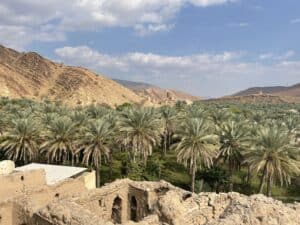

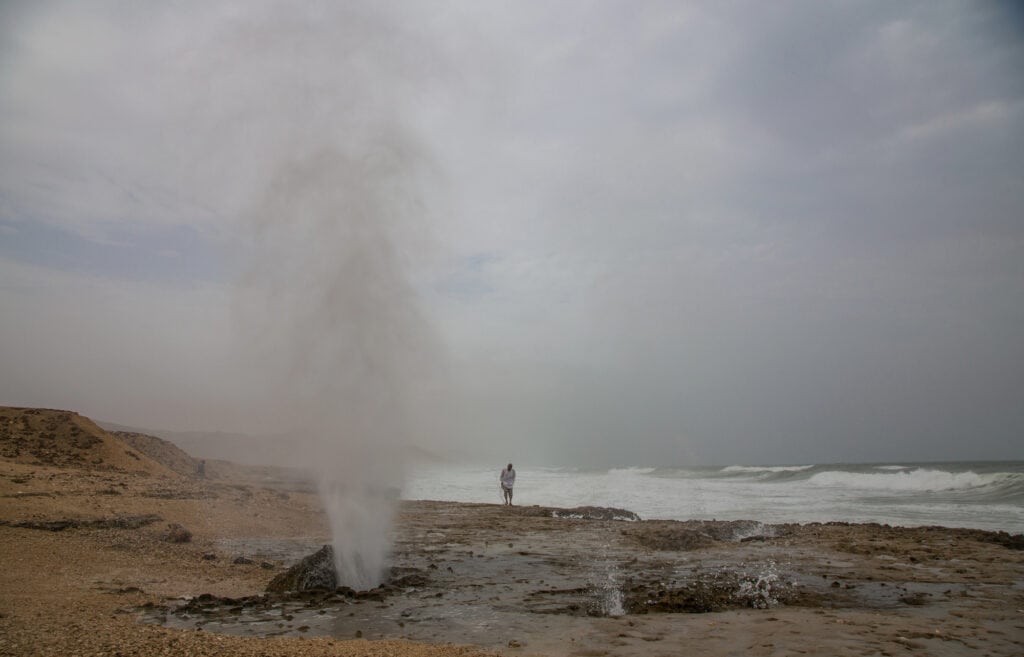
03/06/2025
Looking for some epic things to do in summer in Oman?
You may be thinking, ‘Christine! Apart from getting my hands seared on the burning hot steering wheel and cooking like a chicken, why would I consider visiting a Gulf country in July or August?’
I do understand your concern. However, after living here for over 4 years, I have found that summer here has its own unique advantages – fewer crowds, lower prices, and some surprisingly refreshing experiences if you know where to look.
In fact, some of the best things to do in summer in Oman involve escaping to cooler mountain areas, enjoying the sea early in the morning, or exploring indoor cultural spots that offer both comfort and insight.
With a little planning, you’ll find that summer is not only manageable – it can actually be a great time to discover the country.
In this guide, I’ve put together 15 smart and enjoyable ways to experience Oman in the summer, keeping everything practical, refreshing, and fun.
For fresh air, scenic views, and outdoor adventures without the heat.
Chill Out in Jabal Akhdar
Experience Khareef Season in Salalah
Visit Jebel Shams and Enjoy Cooler Mountain Air
Go Canyoning at Wadi Bani Khalid
To cool down in the water or enjoy sea breezes.
Snorkeling and Dolphin Watching in Muscat
Turtle Watching at Ras Al Jinz
Relax at Bimmah Sinkhole
Catch the Waves: Surfing in Al Ashkharah
For days when you want to avoid the heat entirely and still experience Oman.
Explore Cool Caves at Al Hoota
Discover History at the National Museum, Muscat
Visit the Oman Across Ages Museum near Nizwa
Experience Indoor Shopping and Entertainment at Muscat’s Malls
Enjoy an Indoor Climbing Session at Trampo Extreme
Chill out, treat yourself, and take advantage of low-season luxury.
Relax at a Luxury Beach Resort
Indulge in Ice Cream and Desserts in Muscat
When things heat up, Oman’s mountains offer a welcome retreat.
From misty southern hills to high-altitude villages, these cooler spots are perfect for summer travelers looking to escape the intense temperatures without missing out on nature and culture.
Whether you’re hiking through traditional villages, exploring dramatic canyons, or enjoying Salalah’s Khareef season, these cool mountain escapes let you breathe a little easier – and experience a side of Oman that feels refreshingly different.
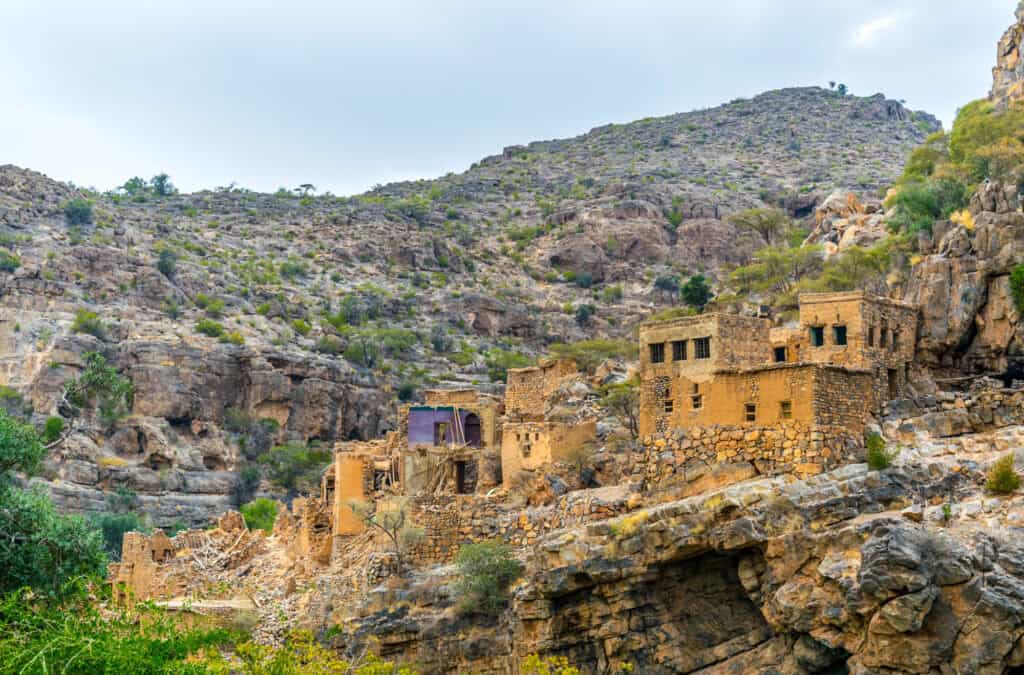
Escape the heat by heading up to Jabal Akhdar, the “Green Mountain.”
Sitting at around 2,000 meters above sea level, this area is significantly cooler than the rest of Oman in summer. It’s lush with terraced orchards, blooming roses, and fresh pomegranates – ideal for early morning and evening walks, hiking, and relaxing in the cool mountain air.
I particularly recommend ‘the Four Village Walk‘ which will take you through the traditional villages of Sayq, Ash Shirajah, Al Ayn and Al Aqur. Also don’t miss the viewpoint at Wadi Bani Habib.
Best time: Early morning or late afternoon
Bring: Walking shoes, sunscreen, light jacket
Don’t miss: Traditional villages like Misfat Al Abriyeen
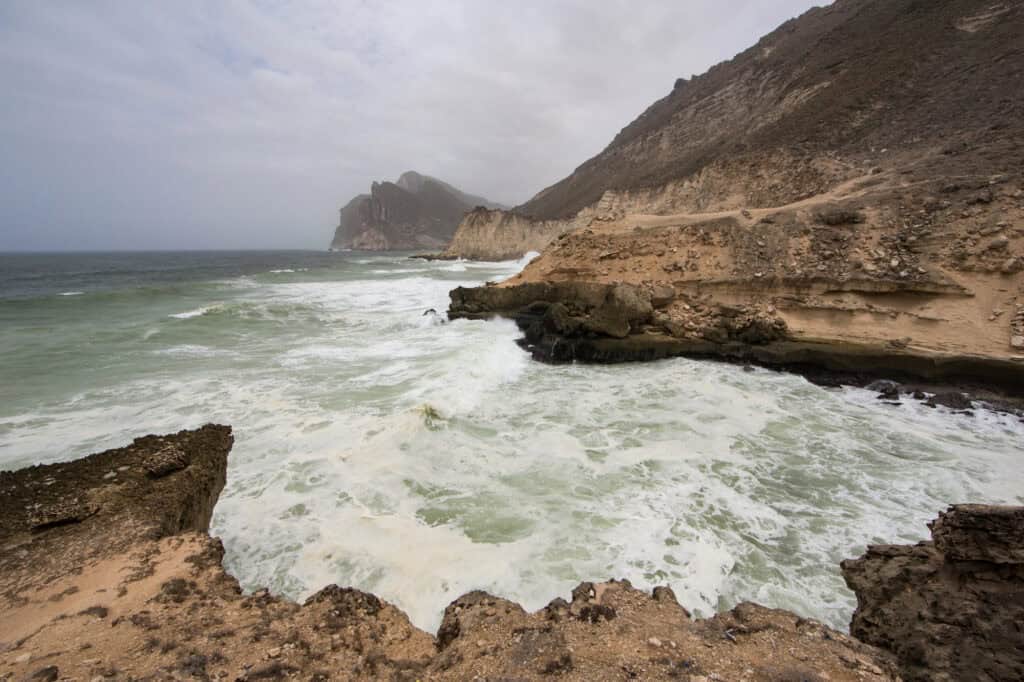
From mid-June to early September, Salalah transforms into a misty, green paradise during the Khareef season. It’s cooler, lush, and perfect for exploring beaches, waterfalls, and festivals. Interestingly, the Arabic word ‘Khareef’ translates to ‘autumn’ although this ‘monsoon’ phenomenon happens between June and September.
Book early (it’s very popular with Omanis), pack waterproof gear, and expect muddy conditions at places like Wadi Darbat.
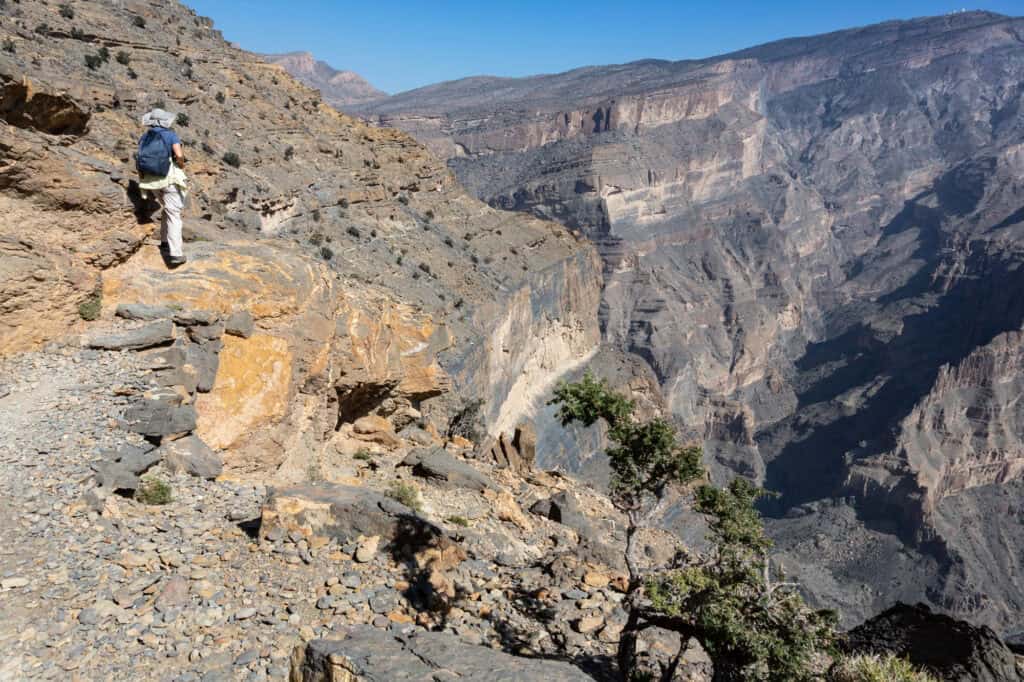
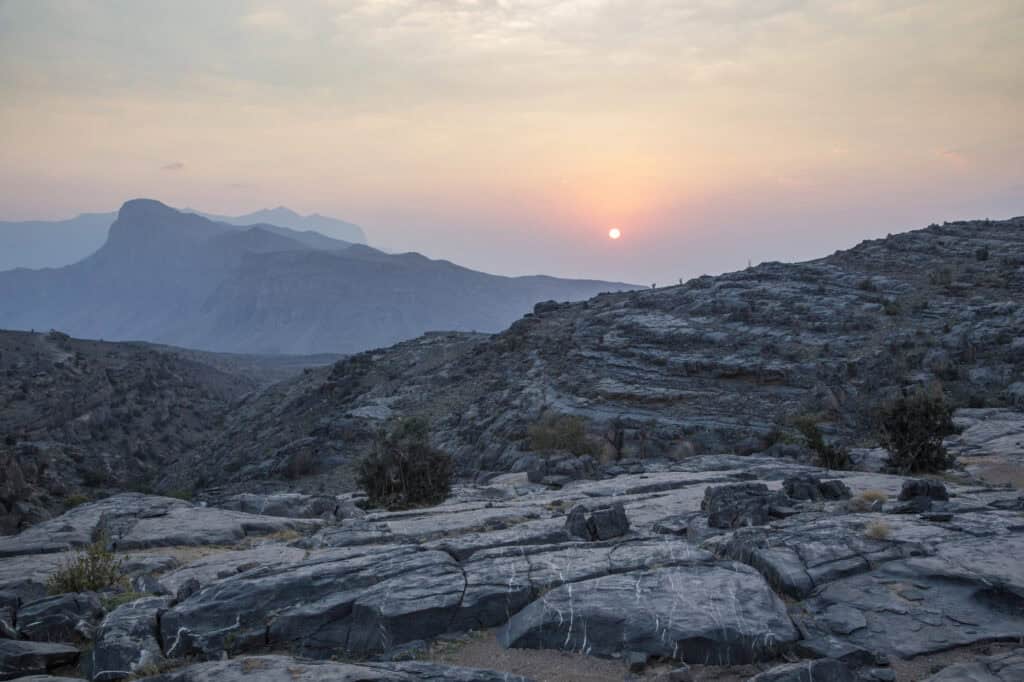
Often called the “Grand Canyon of Arabia,” Jebel Shams stays cooler than the lowlands in summer. It’s perfect for hiking, stargazing, or just enjoying the views.
Bring sun protection, layers for the evening, and lots of water. On a personal note, I do remember hiking there in June and getting dizzy because I hadn’t drunk enough so make sure you stay hydrated.
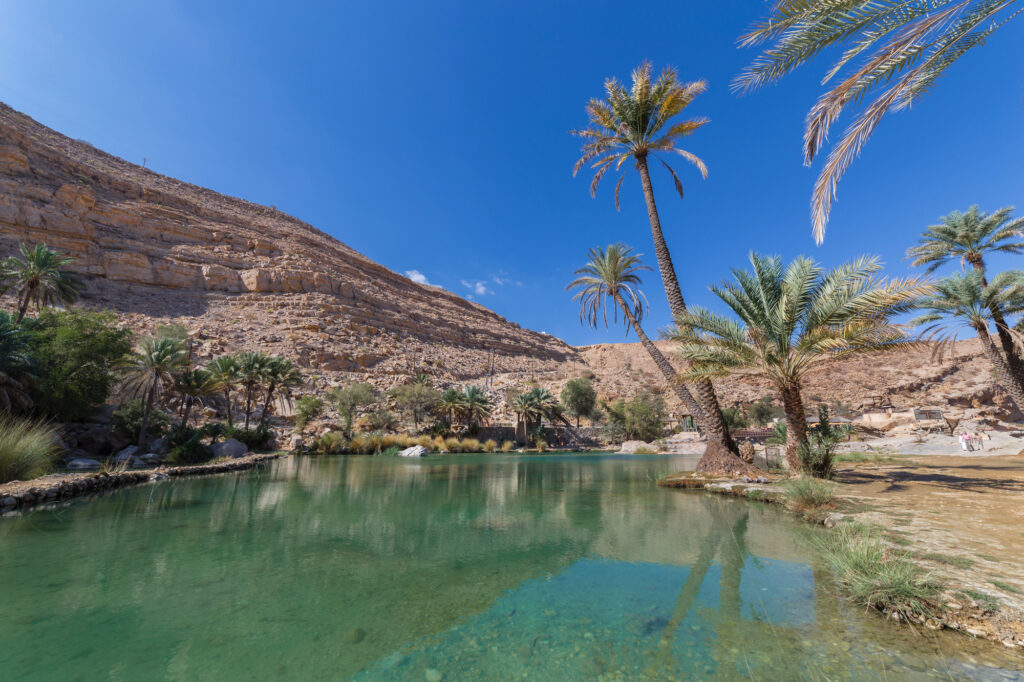
Wadi Bani Khalid offers an adventurous escape through shaded gorges, cool emerald pools, and natural water slides. Guided canyoning tours are available and ideal for summer.
Wear water-friendly footwear such as water shoes or hiking sandals to safely navigate slippery rocks and pools
Modest swimwear is essential: a t-shirt over a swimsuit and leggings or shorts—for upper pools a one-piece may be acceptable but cover up when walking around.
The upper canyon section involves uneven, slippery rocks and narrow passages—make slow, careful progress You can hike further (~10 minutes) to reach Muqal Cave—bring a flashlight as it’s dark and narrow inside
Oman’s coastline offers another antidote to the summer heat.
Whether you’re snorkeling in crystal-clear coves, watching turtles nest under the stars, or riding the monsoon swells on a quiet beach, there’s no shortage of ways to stay cool by the sea.
I have selected the following water-based adventures as they will also give you a glimpse of Oman’s natural beauty.
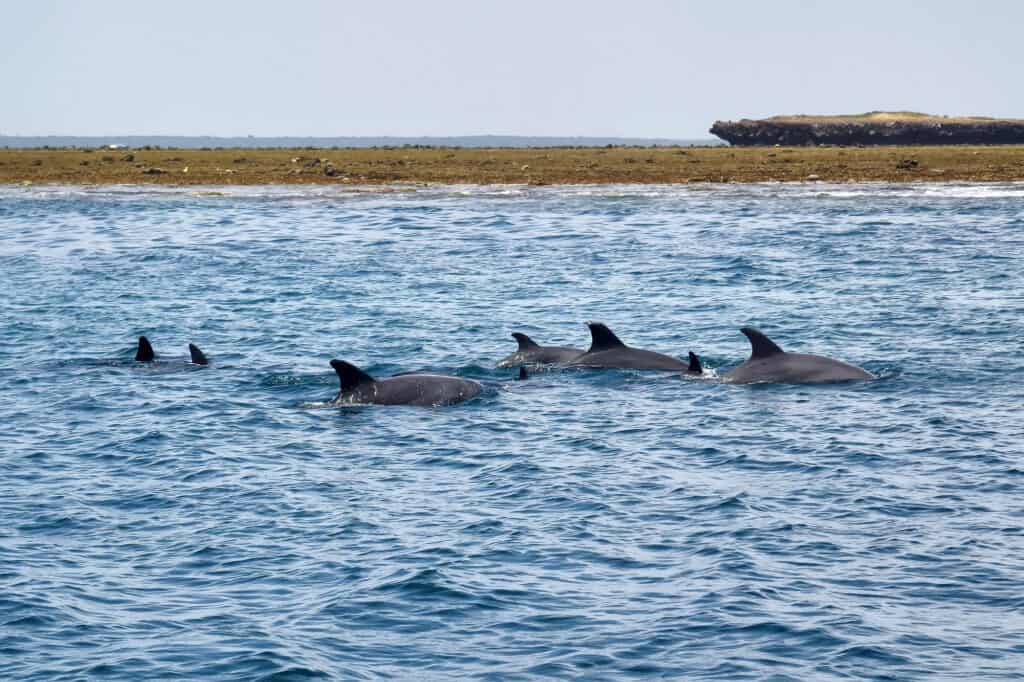
When temperatures soar, heading to the sea to spot some dolphins has a cooling effect (even if it’s humid!).
Make sure you get an early morning boat tour. They offer dolphin spotting followed by snorkeling in Bandar Khayran’s clear waters.
Bring reef-safe sunscreen, a waterproof camera, and book early (7–8 AM) to avoid the midday heat.
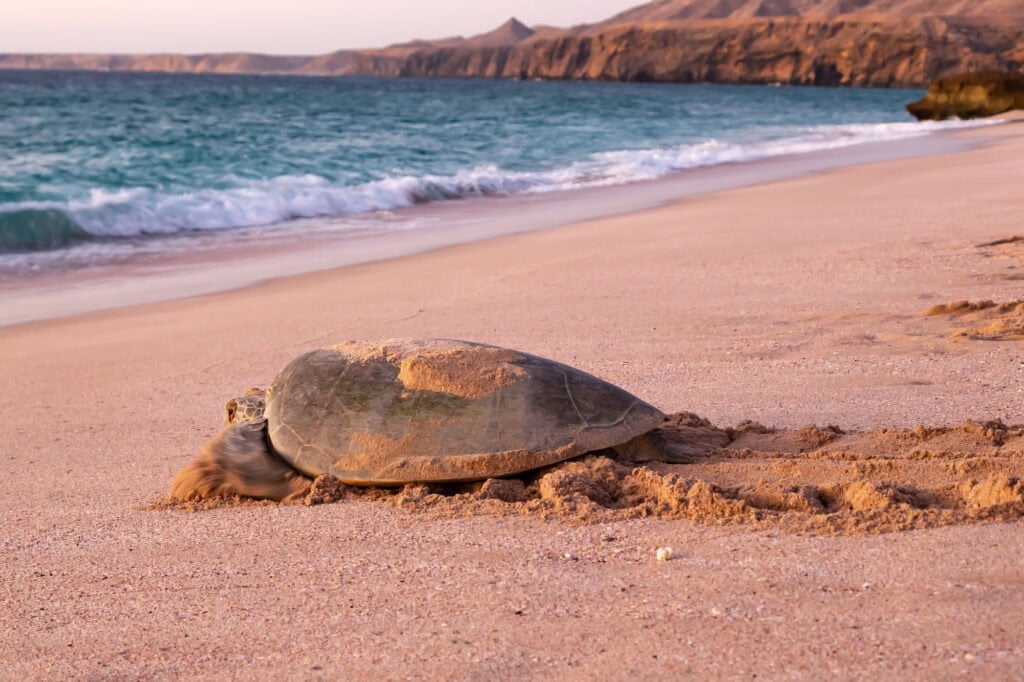
Summer is turtle nesting season, and Ras Al Jinz Reserve offers guided night and dawn tours to see green turtles nesting or hatching. A magical, family-friendly experience.
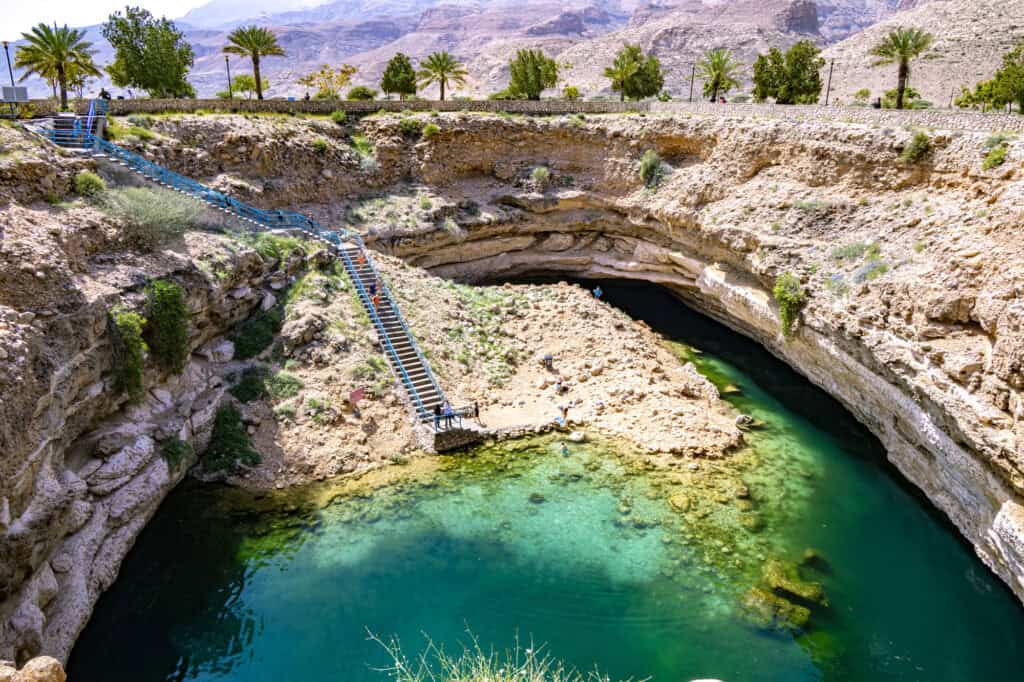
Just seeing the amazing Emerald green colour of the sinkhole is cooling! Even in the heat, there’s something incredibly refreshing about swimming there. I like to get there early in the morning before it gets too hot or crowded – just bring a picnic, swimwear, and plenty of water.
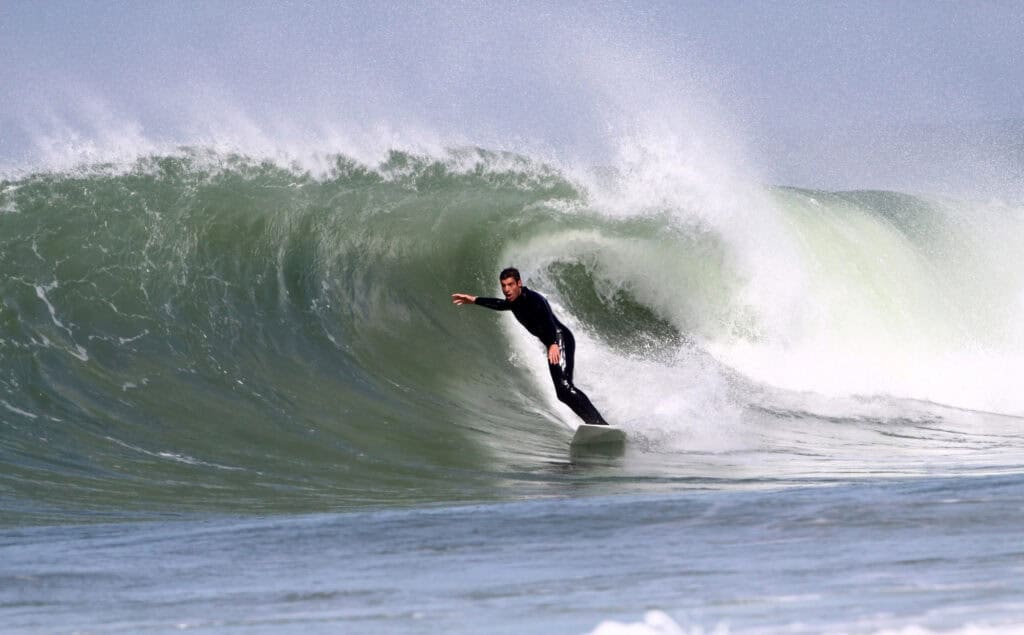
Between May and September, Al Ashkharah’s monsoon swells create some of Oman’s best surf conditions. It’s peaceful, uncrowded, and refreshingly breezy.
Surf conditions at Al Ashkharah are shaped by seasonal monsoon swells and prevailing offshore winds. The strongest surf often arrives in the late afternoon through early evening when the swell peaks—typically around 6–8 PM, and swells can reach up to 2.5 m
In summer, you can also spend an interesting afternoon at one of the air-conditioned indoor attractions.
From interactive museums – such as the fascinating ‘Oman across the Ages’ – to modern malls or doing some indoor climbing, I think there’s something for everyone.
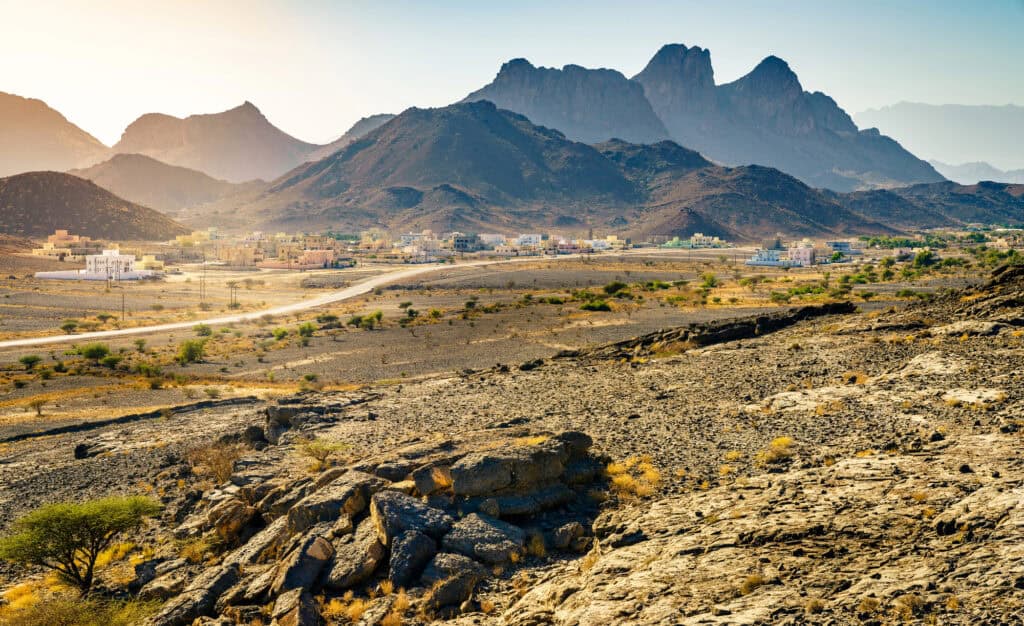

If you are spending a few days in Muscat during summer, I suggest you go for a few hours to the National Museum in the old part of the city. In particular, I recommend the beautifully filmed ‘Oman, the Jewel of the East in the Land of Hope.’
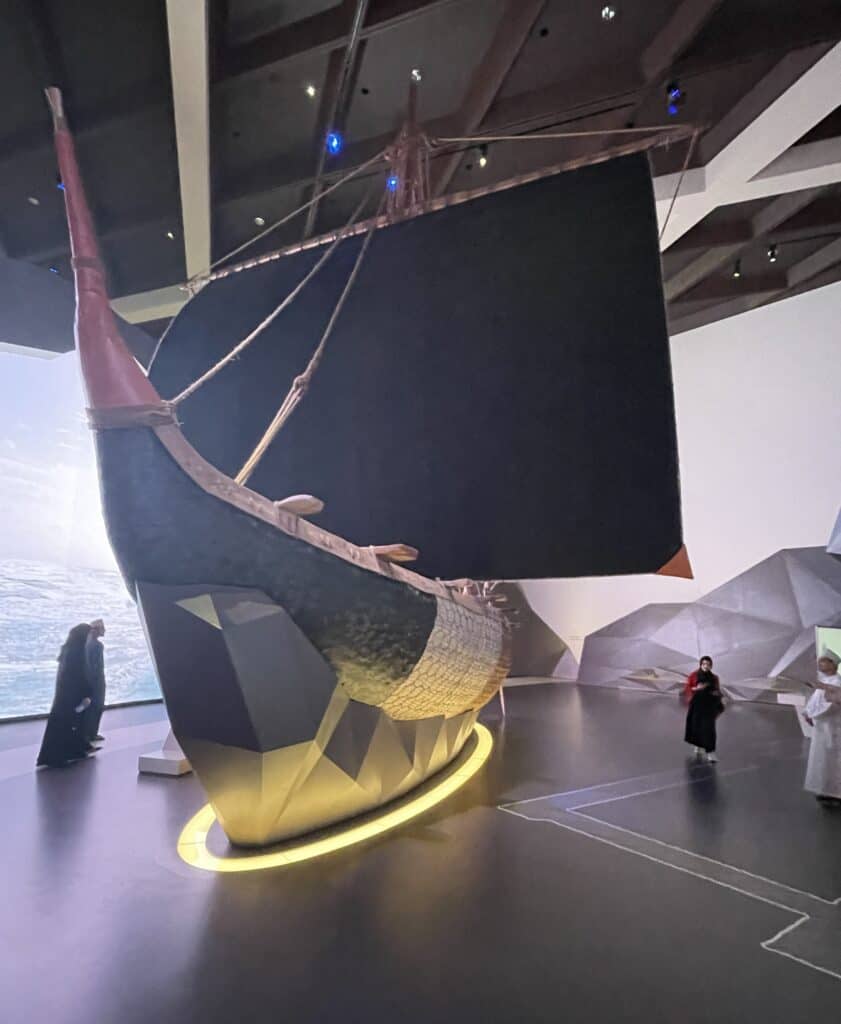
I have visited this museum 3 times and I love it! This modern and interactive museum in Manah (20 minutes from Nizwa) offers an immersive and air-conditioned journey through Oman’s history, geology, and culture. Highly recommended!
Location: Manah – 20 minutes away from Nizwa
Time Needed: A full day or an overnight stay
Cost:
Omani citizens and GCC nationals: 1 OMR
Residents of Oman: 2 OMR
Tourists (non-GCC): 5 OMR
The museum also offers free entry to certain groups:
Children aged 6 or under
Students (up to 25 years old) from schools, colleges, or universities
Visiting teachers, guides, people with disabilities (plus one escort each), Friends of Oman Museums, and museum staff, among others
You can do some souvenir shopping in the air-conditioned comfort of malls like Mall of Oman or Oman Avenues Mall. Enjoy shopping, movies, dining, and entertainment. You might also want to wander around Lulu supermarket to see the range of Omani – and international – food products. Always beautifully set out and interesting!
Opening hours: Saturday–Wednesday 10 AM–10 PM; Thursday & Friday open late until around midnight.
Highlights: Oman’s largest mall by scale, with over 350 shops. A standout is the Snow Oman attraction
Opening hours: Sunday–Wednesday 10 AM–10 PM; Thursday–Saturday until about midnight
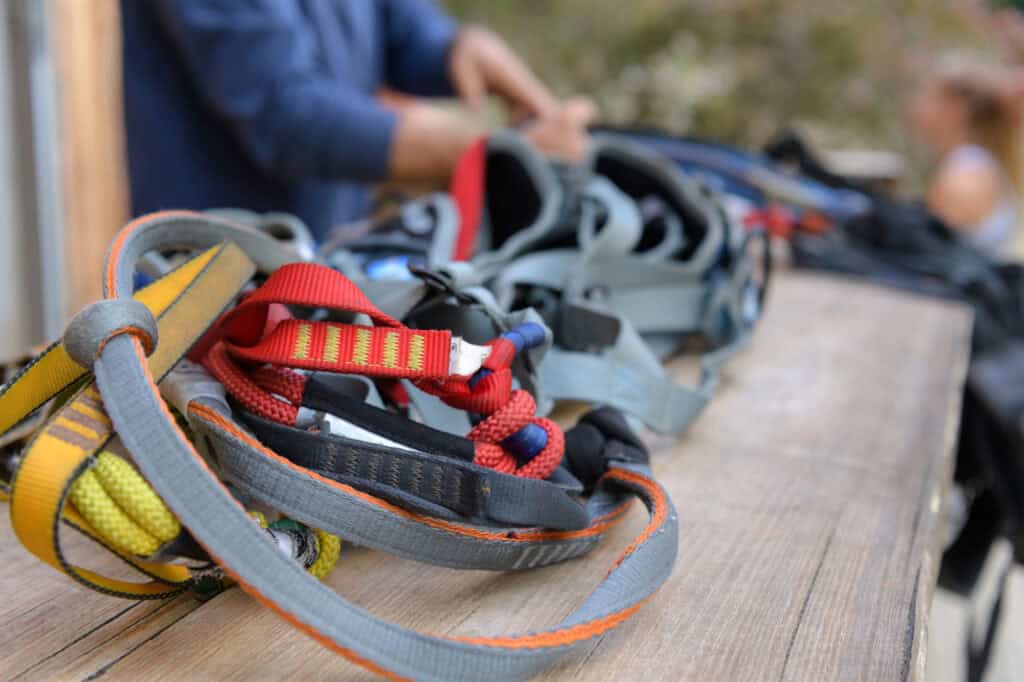
Trampo Extreme is one of the newer activity Centre in Muscat. It offers a wide range of indoor ‘challenges’ such as trampolining, indoor climbing, soft play. Ideal for the whole family!
Open year‑round with these weekly hours:
Sunday–Wednesday: 1 PM – 10 PM
Thursday: 1 PM – 11 PM
Friday: 10 AM – 11 PM
Saturday: 10 AM – 10 PM
Jump Area: Interconnected trampolines, dodgeball courts, basketball hoops, foam pit, battle beam, trapeze, and airbag landing zones
Climbing: Features themed Clip ‘n Climb® walls and a multi-story Sky Trail® aerial course with 21 elements and a 10m high Sky Rail
Soft Play: Safe toddler zones, slides, and foam sections for ages 1–6
Additional areas include ninab‑style courses, twist tunnels, and a skate zone—all offering varied skill challenges for older kids and teens
This final section is about treating yourself -whether that’s lounging by the pool at a luxury resort, savouring a rosewater gelato, or ending the day with a sweet local dessert. These refreshing, low-effort experiences are perfect for recharging.
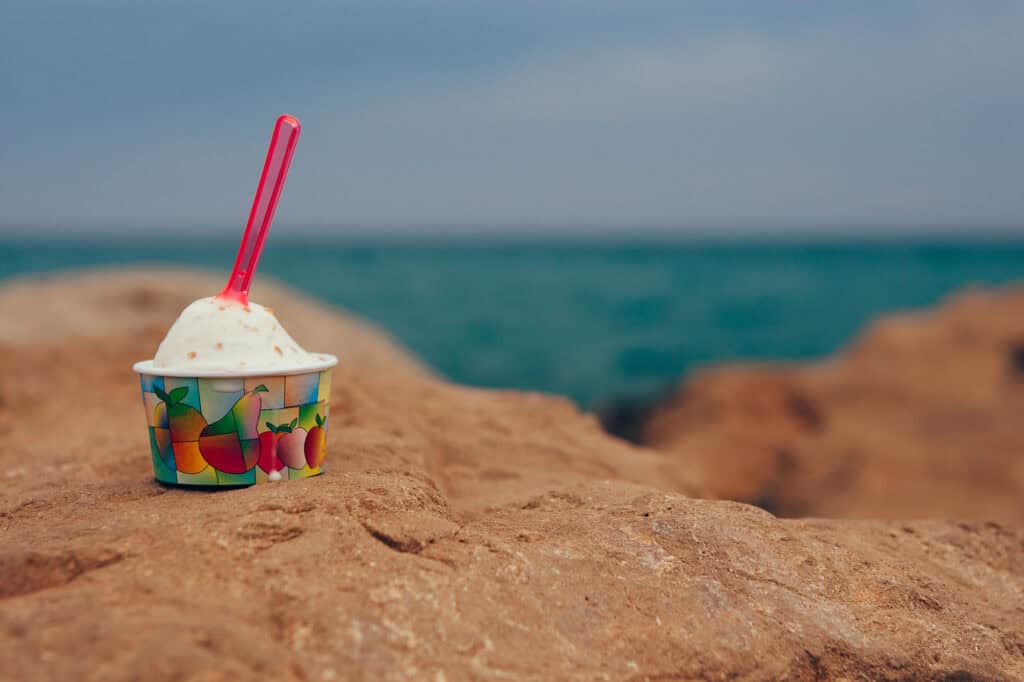
Summer is low season for Oman’s beach resorts, so take advantage of discounts at places like Shangri-La, Al Bustan Palace, or the Kempinski. Enjoy shaded pools, spa treatments, and quiet beaches.

Private beach, infinity pool, renowned spa, and mountain backdrop
Ideal for elegant, peaceful stays
Summer deals often include spa credit or breakfast
The Chedi Muscat (My favourite!)
Minimalist design, three stunning pools (including the 103m Long Pool), and a private beach
Perfect for stylish, tranquil getaways with a focus on wellness and design
Summer offers often include resident rates, spa packages, or complimentary dining credits
Modern beachfront property in Al Mouj Marina
Large pool, excellent dining options, and stylish rooms
Close to cafes, shops, and airport—ideal for short getaways
Treat yourself with artisanal gelato or traditional Omani desserts. Try saffron, date, or rosewater flavours at local favourites like Gelato Lab or Softy Ice Cream in Ruwi (one of the oldest ice cream places in Oman!

Oman in summer might seem like a challenge at first, but with the right plan, it can be one of the most rewarding times to explore the country.
From cool mountain escapes and refreshing wadis to indoor museums and luxury resorts, there are plenty of smart ways to beat the heat.
Whether you’re looking for culture, adventure, or just a quiet place to unwind, these 15 best things to do in summer in Oman prove that the season still holds plenty of magic.
So pack light, stay cool, and don’t write off Oman’s summer – you might just discover a different, quieter side of the country that most travelers miss. Oh…and don’t forget your sun cream and good sunglasses!

Hi, I’m Christine. I’ve lived in Oman for over four years and spent that time travelling across the country - from desert camps to remote mountain villages. Joussour to Oman is where I share practical guides and honest tips for experiencing Omani culture, nature, and daily life. This list is based entirely on places I’ve visited myself - often more than once.